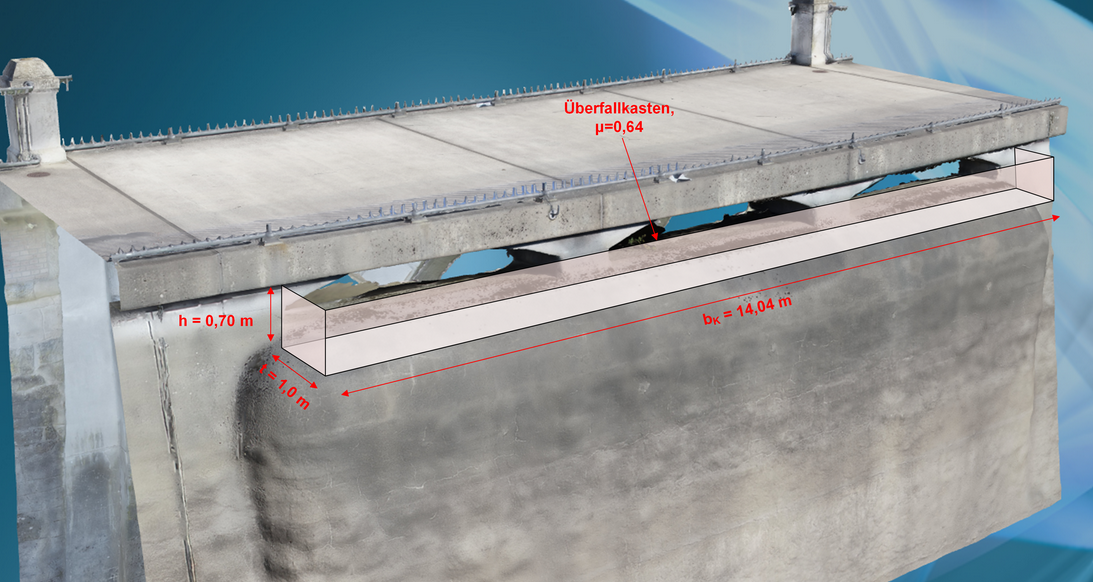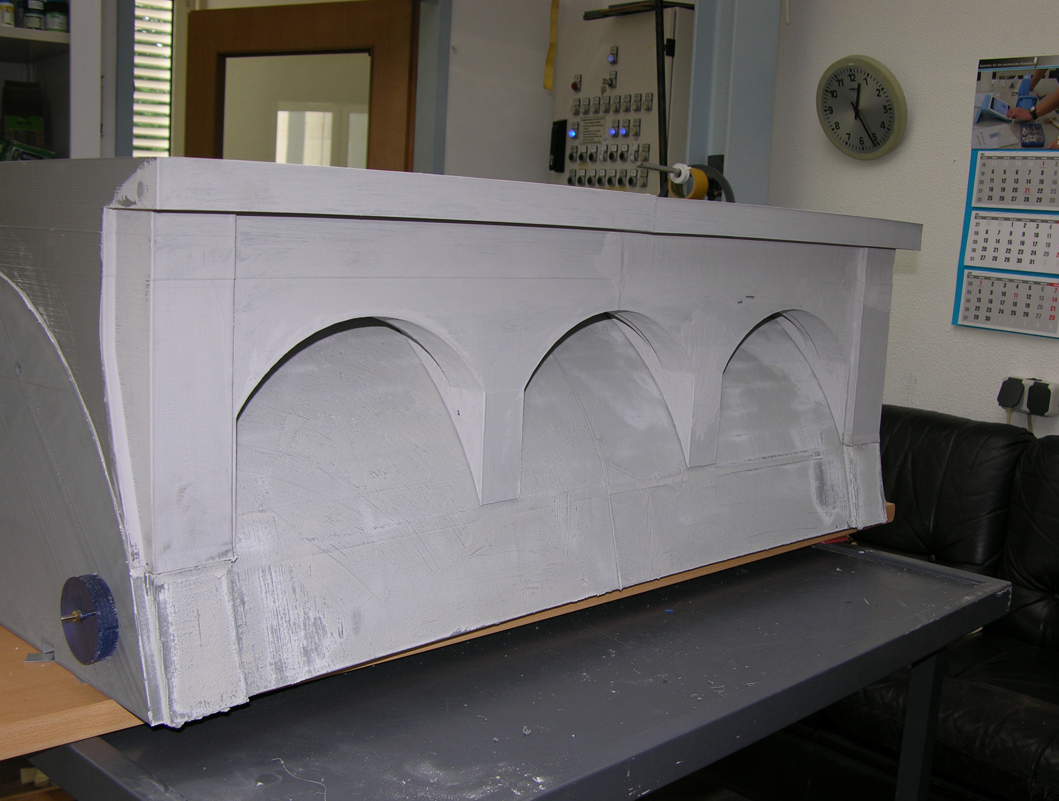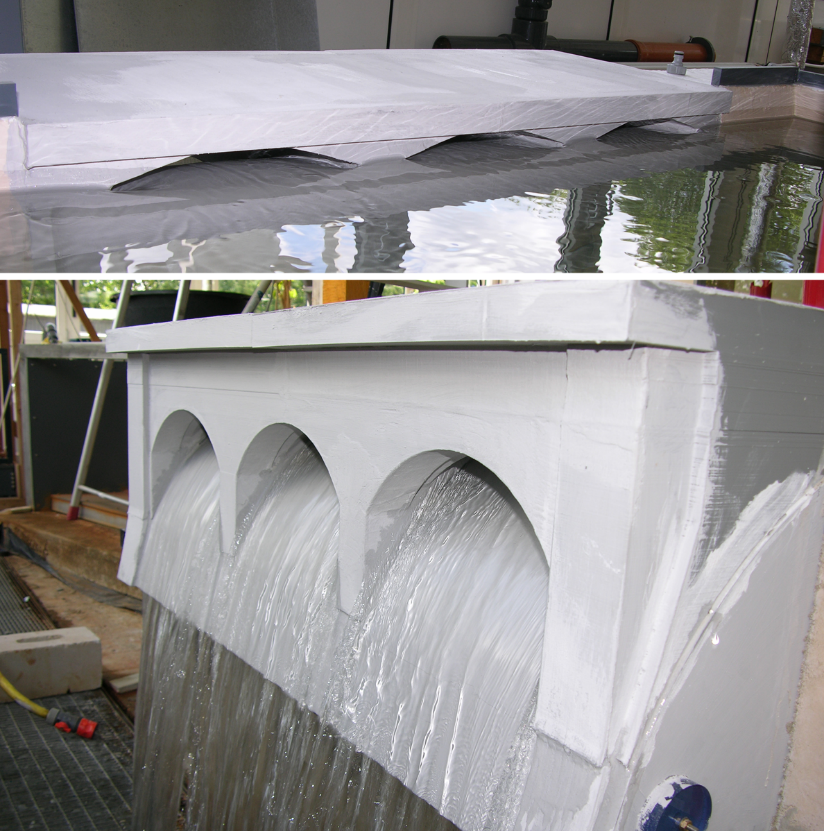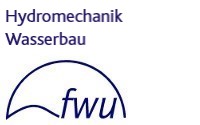Flow-physical model tests for the redesign of the spillway at the Glörtalsperre (Gloer dam)
Project Data
| Duration: | 01.03.2023 to 31.10.2023 |
| Coordinator: | Univ.-Prof. Dr. Jorge Leandro (Details) University of Siegen Research Institute for Water and Environment (fwu) Paul-Bonatz-Str. 9-11 57076 Siegen jorge.leandro@uni-siegen.de |
| Client: | wbu consulting Ingenieur GmbH |
Description
In the hydraulic engineering laboratory, investigations are currently underway on a partial model of the flood relief at the Glörtalperre (Gloer dam) on a scale of 1:16.
The Glörtalsperre (Gloer dam) is located on the border of the Ennepe-Ruhr district and the Märkischer-Kreis district in North Rhine-Westphalia. With a storage volume of approx. 2.1 million m³, it is a smaller dam. The heavyweight arch dam is 168 m long, the greatest height above the valley floor is 32 m.
The operator of the Glörtalsperre (Gloer dam) has the idea to raise the current dam level of the dam by about 70 cm - to its original height - as planned. On the one hand, this has the significant advantage of better flood protection for downstream residents and, on the other hand, it also has a positive effect on hydropower utilization.
The spillway of the Glörtalsperre (Gloer dam) consists of three fixed, arch-shaped weir openings in the wall. The idea is to place an upward-opening box (h = 0.70 m) in front of the openings on the water side, so that the water first flows over the box and then into the existing openings of the HWE (cf. Figure 1)

Figure 1: Principle sketch of the desired HWE modification (Source: wbu Consulting Ingenieur GmbH)
The question is whether the modification of the HWE structure described above - also with regard to the normative specifications of DIN 19700 "Dams" can be operated safely.
According to the basic principles and boundary conditions of hydraulic engineering testing and the available area, a model with a scale of 1:16 was produced. With the model scale of 1:16, sufficient accuracies are given for the design discharge under consideration of the necessary measuring technique in the reproduction of the natural state in the model and the given questions can be processed with appropriate quality.
According to the scale, e.g. for the design discharge BHQ2, nature = 21.80 m³/s in nature, a model discharge of BHQ2, model = 21.29 liters/s results.
On the water and airsides, the model represents the upper 6 meters of the entire HWE in a geometrically similar manner, i.e., the superstructure with the arched vault and the roadway slab are also represented in the model.
Due to the very complex geometry of the spillway (biaxially curved arch), a large-format FDM 3D printer available at fwu was used for the precise fabrication of the model (see Figures 2 and 3). The structure is approximately 1.04 m long, 46 cm high and 49 cm deep in model scale 1:16. Printing time for all four parts totaled 16 days; material weight 21.3 kg.


Figure 3: The completed model in operation (top: water-side view of the spillway; bottom: air-side weir with the three arched outlets)



